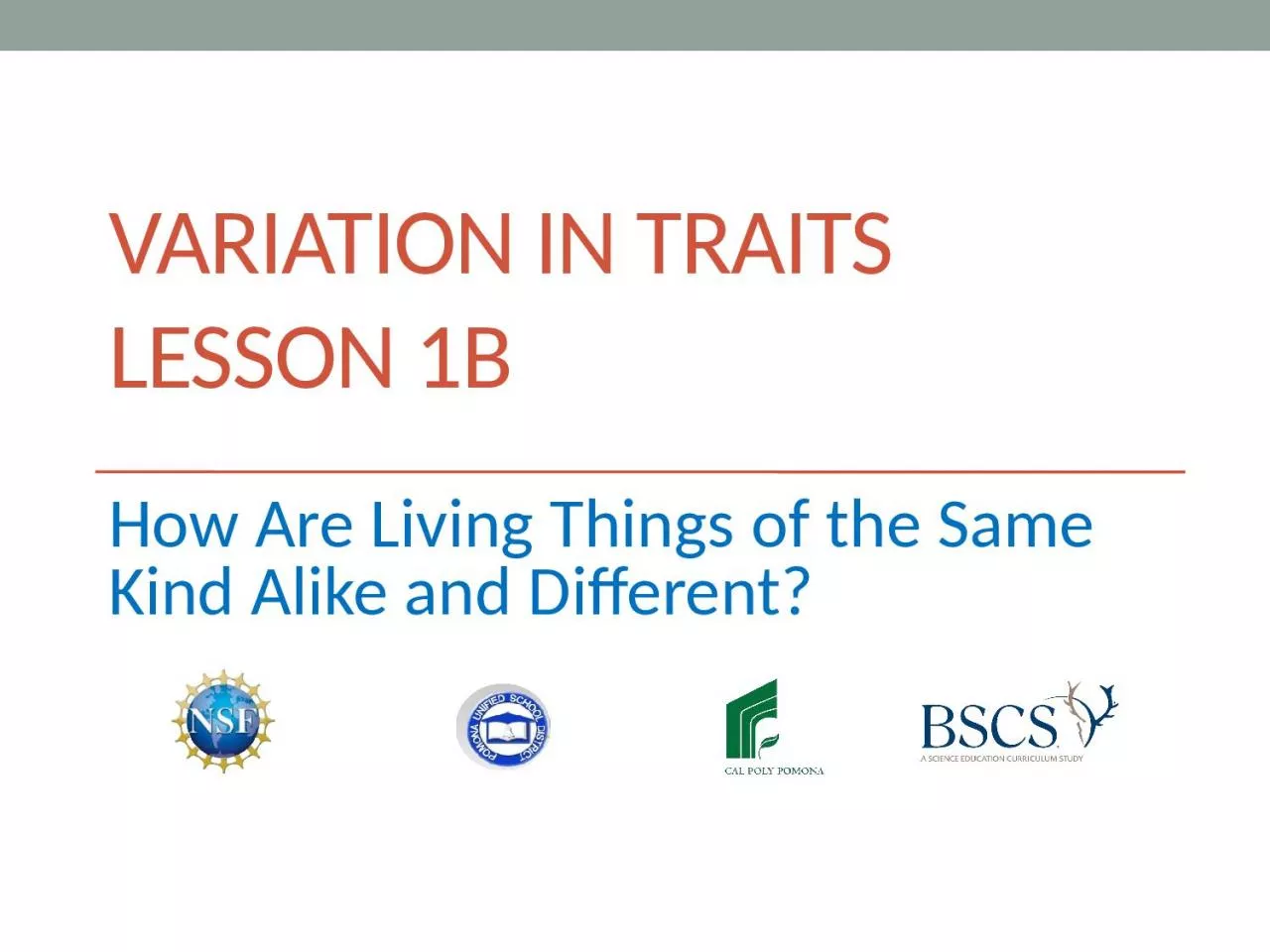

How Are Living Things of the Same Kind Alike and Different Ladybugs Traits and Variation VARIATION TRAITS Ladybugs Our Focus Question How are living things of the same kind alike and different ID: 1039189
Download Presentation The PPT/PDF document "Variation In traits Lesson 1b" is the property of its rightful owner. Permission is granted to download and print the materials on this web site for personal, non-commercial use only, and to display it on your personal computer provided you do not modify the materials and that you retain all copyright notices contained in the materials. By downloading content from our website, you accept the terms of this agreement.
1. Variation In traits Lesson 1bHow Are Living Things of the Same Kind Alike and Different?
2. Ladybugs: Traits and VariationVARIATIONTRAITSLadybugs
3. Our Focus QuestionHow are living things of the same kind alike and different?
4. Count the SpotsPhoto courtesy of Clipart-library.com
5. Create a Bar GraphPlace your sticky note on our class bar graph to show how many spots your ladybug has. 2019181716151413121110987654321012345678910111213141516171819202122Bar Graph of Ladybug SpotsNumber of LadybugsNumber of Spots9999999
6. Examine the Ladybug DataHow many spots do most of our ladybugs have? How do you know?
7. Examine the Ladybug DataIn your small group, come up with two more observations about the ladybugs’ spots based on evidence from our class bar graph.Be ready to share your observations and ideas with the class.
8. How Can Bar Graphs Help Us?What did we learn about ladybugs from our bar graph?How did the bar graph help us learn those things?Would calling out the numbers of spots have made it easier or harder to learn about the differences (variations) in this trait among ladybugs? Why?What makes a bar graph a better way to share our data than calling out the number of spots?
9. Another Ladybug TraitHow many legs does your ladybug have?
10. Another Ladybug TraitTalk about these questions in your small group:Do ladybugs show variation for the number-of-legs trait?What would a class bar graph look like for the number of legs our ladybugs have?Sketch the graph in your notebook to help you imagine what it would look like. As you create your graph, think about a few ladybugs and the number of legs they have.
11. Our Focus QuestionHow are living things of the same kind alike and different? Observations:All of our ladybugs have spots, but there was a difference in the number of spots. This difference is called variation. So our ladybugs showed variation in the number-of-spots trait.All of our ladybugs have six legs, so they showed no variation in the number-of-legs trait.
12. Key Science IdeaAmong living things of the same kind, some traits show variation and some don’t.
13. Let’s Summarize!Our focus question: How are living things of the same kind alike and different? Write an answer to this question in your science notebook, using everything you’ve learned about traits and variation.Include evidence from our investigations today and last time to support your ideas.
14. Next TimeDo other living things, such as plants, show variation in some traits and not in others? Photo courtesy of Wikimedia.com